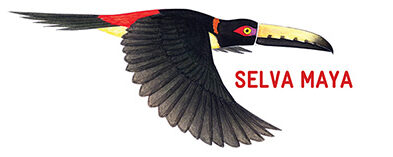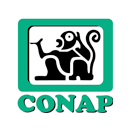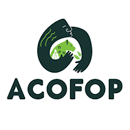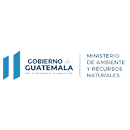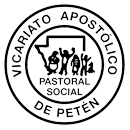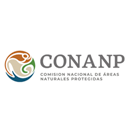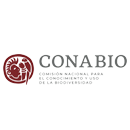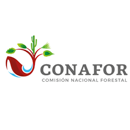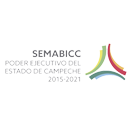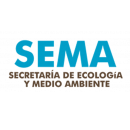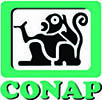
The Institutions
![]()
BELIZE

MFFESD
The Ministry of Fisheries, Forestry, the Environment and Sustainable Development and Immigration (MFFESD) has been restructured in 2020. Previously it was called MAFFESDI considering ti included the Departments of Agriculture and Immigration, which are now part of other Ministries.
The aim of merging the departments that currently make up the MFFESD is to ensure resource efficiency and to allow coordination between the Departments that lead the administration of natural resources.
website: https://www.belize.gov.bz/MFFESD

Forest Department
The Forest Department (FD) is responsible for overseeing forest resource use and protection. Its main tasks include granting permits and forestry licenses, collecting taxes for forest resource use, monitoring and, to a large degree, the design and implementation of management plans. It is also responsible for the administration of about half of the protected areas in the country.
The Forest Department has organized its main areas of intervention into three programs:
• Sustainable Management of Forest Resources
• Protected Areas
• Biodiversity & Wildlife.
Hierarchically, the three programs are executed under coordinated administrative responsibility and are oriented towards the principle of sustainable forest resource management.
Website: http://forestdepartment.gov.bz
DEPARTMENT OF AGRICULTURE
The Department of Agriculture’s aim is to provide an environment that is conducive to increase production and productivity, promoting investment, and encouraging private sector involvement in agribusiness enterprises in a manner that ensures competitiveness, quality production, trade and sustainability
The overall goal is to engender a conductive environment for the development of an Agriculture and Food Sector that is competitive, diversified and sustainable, enhances food security and nutrition, and contributes to the achievement of the socio-economic development goals of Belize.
The main objective of the Department of Agriculture is to ensure greater efficiency and effectiveness in the structure and institutional management systems of the Agriculture and Food Sector in Belize. This will be through well-defined roles of regulatory and promotional bodies, enhancing greater collaboration among key stakeholders, and the establishment of clear policy incentive or disincentive frameworks for the production, utilization, and marketing of agriculture and food products. This is expected to enhance the sustainable growth of the sector, to ensure food and nutrition security, to improve farmer/processor income, to create employment, and to attract private sector investment and participation in the sector.
Website: http://www.agriculture.gov.bz

Guatemala
CONAP
The National Council of Protected Areas is a public, autonomous and decentralized entity that works with several different actors to conserve protected areas and the biodiversity of Guatemala. It was created in 1989 and is directly dependent on the Presidency of the Republic. It is the top leadership and coordination entity of the Guatemalan System of Protected Areas (SIGAP). It has jurisdiction throughout the national territory, its coastlines and airspace. Among its main functions are the coordination/administration of the country’s biodiversity and to ensure that the provisions on the conservation of biodiversity in international instruments ratified by Guatemala, are applied.
Its primary mission is to ensure the conservation and sustainable use of biodiversity and protected areas in Guatemala, as well as the natural goods and services they provide to present and future generations. CONAP does this by designing, coordinating and ensuring the implementation of policies, regulations, incentives and strategies in collaboration with other actors.
Website: conap.gob.gt
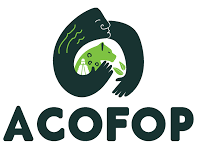
ACOFOP
The Association of Forest Communities of Petén is a community-based association in northern Guatemala. It is made up of 23 peasant and indigenous organizations that engage in community forestry in the Multiple Use Zone of the Maya Biosphere Reserve. ACOFOP develops activities in sustainable forestry, community tourism, management of non-timber resources, local capacity building and socio-economic benefits. Its work has been recognized nationally and internationally as an example of successful organization in terms of collective action for sustainable management of natural resources, achieving both forest resourceconservation and the economic development of forest communities.
Its primary goal is to improve the quality of life of forest communities through community forest management, thereby promoting the social, ecological, economic and political sustainability of the region. ACOFOP’s intervention has been essential in designing management and business plans, establishing partnerships with NGOs, providing support in production processes within each community, the creation-legalization of community organizations, and in advocating to state institutions.
Website: www.acofop.org
MAGA
The Ministry of Agriculture, Livestock and Food is a state institution in Guatemala that contributes to the country’s integrated rural development and promotes the modernization of agriculture and the development of productive, organizational and commercial capacities of producers.
It is a public institution that promotes agricultural development and access to a sufficient and safe food supply from production chains that supply national and international markets through the sustainable use of natural resources.
Website: maga.gob.gt

SEGEPLAN
The Secretariat of Planning and Programming of the Presidency (SEGEPLAN) is the state planning agency, established as an institution to support the powers of the Presidency of the Republic.
SEGEPLAN assists in formulating the government’s general development policy and assesses its implementation and effects. SEGEPLAN has two areas of planning and programming: global and sectoral, and the validation of citizen participation throughout the national territory through the System of Development Councils.
Its vision is to be an institution recognized for its technical soundness, which guides and coordinates processes and strategic decisions that contribute to the country’s development within the framework of the National Planning System.
Website: segeplan.gob.gt
MARN
The MARN is the entity of the public sector specialized in environmental matters and natural goods and services of the public sector, responsible for the protection of natural systems that develop and give support to life in all its manifestations and expressions, promoting a culture of respect and harmony with nature and protecting, preserving and rationally using the natural resources.
The main goal is achieving a transgenerational development, articulating the institutional, economic, social and environmental task, with the purpose of forging a competitive, solidary, equitable, inclusive and participative Guatemala.
Página web: http://www.marn.gob.gt/paginas/Institucin
Pastoral Social
The Pastoral Social Program of the Apostolic Vicariate of Petén, Guatemala is the active social part of the Catholic Church in the department. It is a non-profit organization that manages, plans and implements projects of common good in rural areas. It is characterized by its effort to attain integrated sustainable rural development in the communities it serves.
The Pastoral Social Program is made up of 7 commissions established in the strategic plan of the institution. These are:
- Earth Group: Executes agricultural production projects, trains farmers in agroecology and in the care and protection of natural resources;
- Health: Trains midwives and nurses as well as rural staff in first aid;
- Women: Addresses issues of equality and gender equity;
- Legal: Provides free legal assistance to the low-income rural population;
- Human Rights: Promotes human rights to different target groups;
- Human Migration: Provides moral support and increased awareness to migrants heading to the US; and
- Education: Manages educational projects in indigenous communities, in their native language.
Wildlife Conservation Society
La Sociedad para la Conservación de la Vida Silvestre (Wildlife Conservation Society – WCS) es una organización no gubernamental fundada en 1895 como la New York Zoological Society. Su misión actual es contribuir a la preservación de la vida silvestre y los sitios de vida silvestre, en el mundo entero, a través de la ciencia, acciones de conservación, educación y sensibilización sobre el valor de la naturaleza. WCS usa la ciencia para descubrir y entender el mundo natural; este conocimiento ayuda a que los tomadores de decisiones, comunidades y millones de colaboradores sean inspirados y se involucren en las acciones de protección.
En Guatemala, la WCS inició sus labores en el año 1992 con la misión de conservar la Reserva de Biosfera Maya como una de las áreas naturales más importantes de Mesoamérica para la vida silvestre. Su principio central es la formación de capacidades nacionales y locales, a través del acompañamiento a técnicos, estudiantes y expertos nacionales, y el fortalecimiento de la sociedad civil guatemalteca.
En ese contexto, WCS labora bajo cuatro ejes interrelacionados con el fin de conservar la Reserva de Biosfera Maya (RBM): 1) Investigación biológica y monitoreo; 2) Desarrollo social y manejo sostenible de recursos naturales de comunidades rurales; 3) Protección y prevención de incendios forestales; y 4) Gobernabilidad y temas transversales incluyendo el financiamiento sostenible de la RBM.
Página web: https://guatemala.wcs.org/
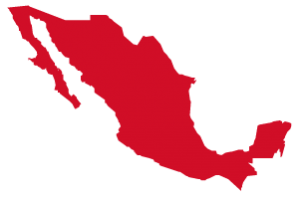
MÉXICO
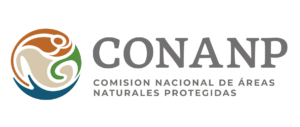
CONANP
The National Commission of Natural Protected Areas is an agency of the Secretariat of Environment and Natural Resources (SEMARNAT). In existence since 2000, it currently manages 176 Protected Areas (ANP) and is one of the basic policy instruments of biodiversity conservation. CONANP is also responsible for implementing the Regional Sustainable Development Programs not only in protected areas but in other Priority Conservation Regions that do not have a decree on protection. It supports 379 Voluntarily Designated Conservation Areas which cover an area of just over 416,141 hectares.
The mission of CONANP is to preserve the most representative ecosystems of Mexico and their biodiversity through the ANP and other forms of conservation, fostering a culture of conservation and sustainable community development in their environment with criteria for inclusion and equity. To support effective management in the environmental sector, CONANP’s framework encompasses the six pillars of environmental policy:
- Integrity
- Commitment by all economic sectors
- New environmental management
- Valuation of natural resources
- Adherence to the law, combating environmental impunity and social participation, and
- Accountability
Website: www.conanp.gob.mx

CONABIO
The National Commission for Knowledge and Use of Biodiversity (CONABIO) is an inter-secretarial commission created in 1992. Its mission is to promote, coordinate, support and carry out activities aimed at increasing knowledge of biodiversity, and its conservation and sustainable use for the benefit of society. It was conceived as an applied research organization, promoting basic research.
It compiles and generates information on biodiversity, provides capacity development in biodiversity informatics and is an accessible public source of information and knowledge for the entire society.
CONABIO also generates information on natural capital and serves as a bridge between academia, government and society. It promotes biodiversity conservation and management based on actions taken by the local population, which should be a central actor in this process. Finally, CONABIO assures compliance with international commitments on biodiversity signed by Mexico.
Website: www.conabio.gob.mx
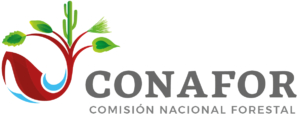
CONAFOR
The National Forestry Commission, created by presidential decree on April 4, 2001, is a decentralized public agency whose objective is to develop, encourage and promote production, conservation and restoration activities in forestry, as well as participate in the formulation of plans, programs, and implementation of sustainable forest development policy.
Its mission is to promote and advance sustainable forest development through public policies and implementation of programs aimed at increasing protection, production and productivity, thus contributing to economic growth and social development.
Website: www.conafor.gob.mx
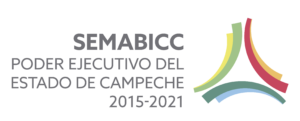
SEMABICC
The mission of the Ministry of Environment, Biodiversity and Climate Change of Campeche (SEMABICC) is to design, direct, promote and implement criteria and instruments for environmental protection, conservation and restoration and the use of the state’s natural wealth. It incorporates social participation through strategic alliances that implement public policies for sustainable development, to ensure the human right to a healthy environment.
Website: www.semarnatcam.campeche.gob.mx

SEMA
The Ministry of Ecology and Environment of Quintana Roo is responsible for defining and leading state environmental public policy, as well as implementing the Sectoral Program on Ecology and Environment with its strategies and lines of action in the short, medium and long term.
Its mission is to incorporate, in all areas of society, criteria and instruments that ensure an ecological culture that puts caring for the environment and environmental preservation first, making decisions that encourage and promote sustainable use of natural resources. It consolidates a green Quintana Roo and promotes new forms of participation that encourage citizens individually and in organized groups to intervene in the formulation and implementation of environmental policies. SEMA also strengthens environmental governance in the state, taking into consideration climate change, including aspects of mitigation and adaptation.
Website: sema.qroo.gob.mx
CENTROAMERICA

CCAD
The Central American Commission on Environment and Development (CCAD) was created in December 1989. Its Articles of Agreement was signed by the Presidents of the Republics of Costa Rica, El Salvador, Guatemala, Honduras and Nicaragua. Later, Belize (2000) and the Dominican Republic (2013) joined. Today CCAD is confined to the Central American Integration System (SICA), the institutional framework for regional integration in Central America.
CCAD’s mission is to develop a regional system of cooperation and environmental integration to help improve the quality of life of people of its member states through economic development, coordination of efforts and by increasing the potential of available resources. One of its most notable efforts has been developing the Environmental Plans for the Central American Region (PARCA). The first plan was adopted in 1999 for the period 2000-2004, and primary goals were to put the Central American Alliance for Sustainable Development (ALIDES) into operation and begin consolidating CCAD as a whole. PARCA II, for the period 2005-2009, addressed developing instruments for environmental management and the establishment of intersectoral regional alliances. PARCA III, 2010-2014, focused on environmental governance and since it expired, the Council of Ministers agreed to formulate a Regional Environmental Strategy valid for 2015-2020.
Website: www.sica.int/ccad
